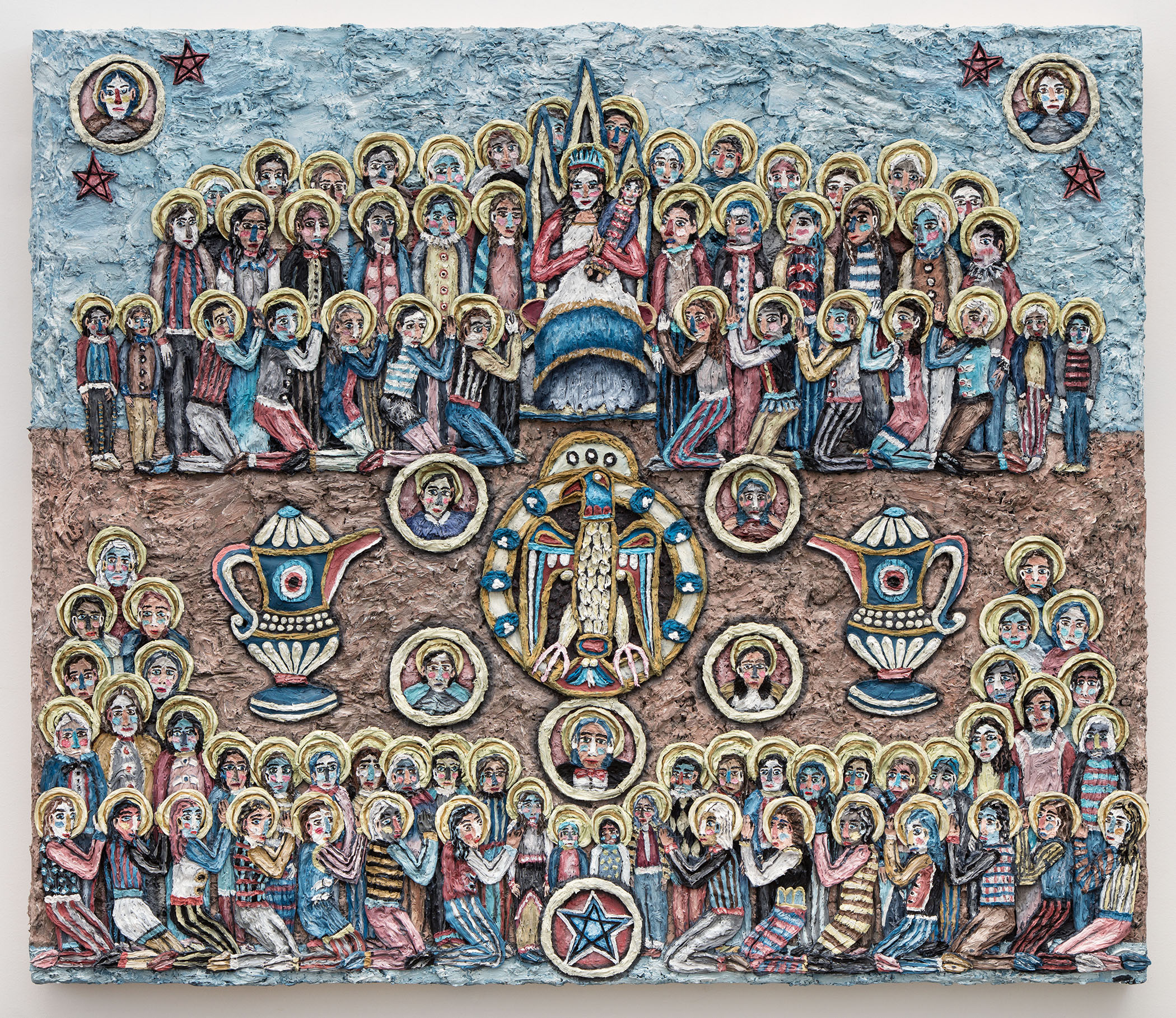
Jeni Spota’s painting “Bird Woman” will be on display at the
DePaul Art Museum in “Four Saints in Three Acts,” an exhibition that examines
religious imagery in contemporary art. (Image courtesy of the artist and Brennan
& Griffin Gallery)
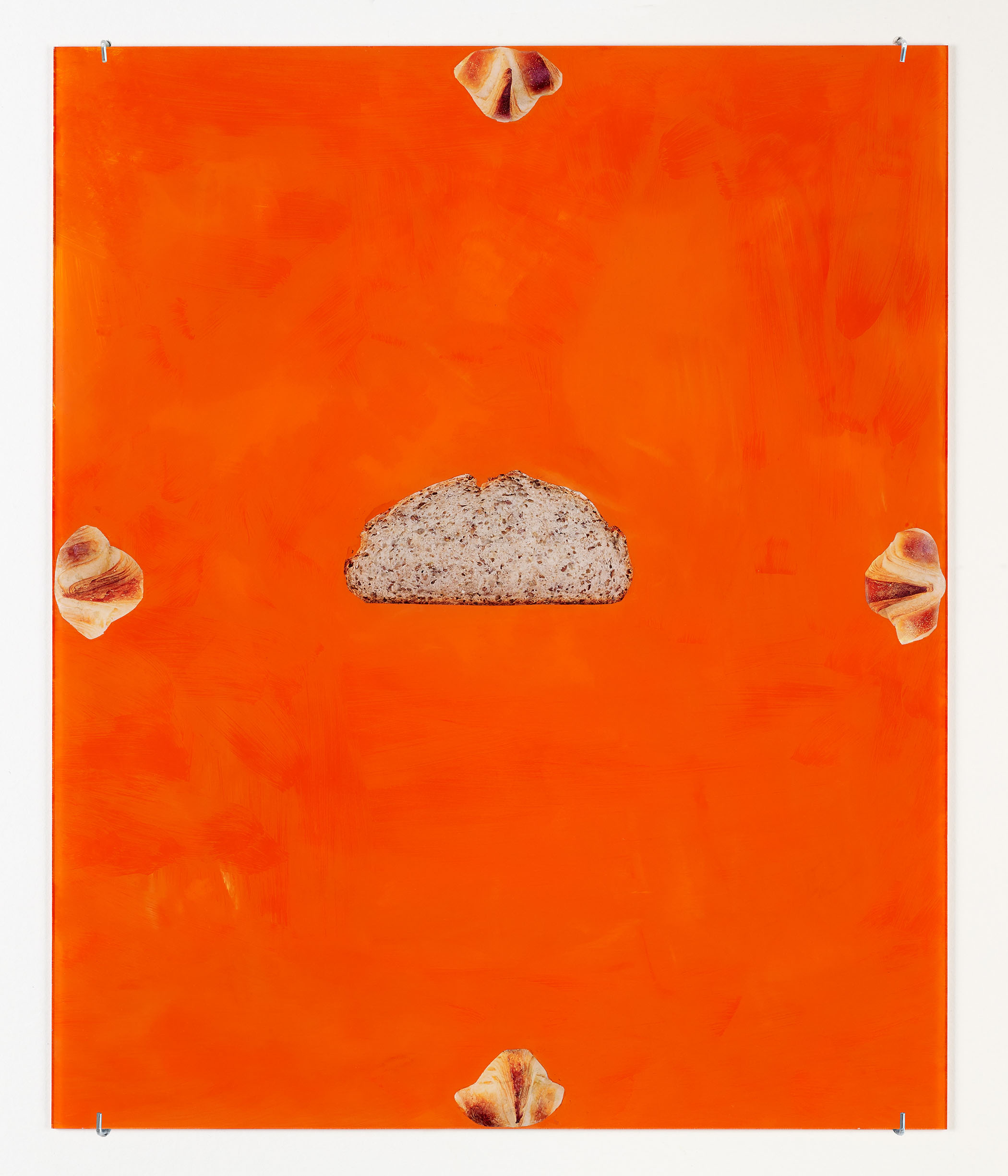
Andrea Büttner’s “Bread Painting” will be on display at the
DePaul Art Museum in “Four Saints in Three Acts,” an exhibition that examines
religious imagery in contemporary art. (Photo by Jörg Baumann, courtesy of
Hollybush Gardens, London and David Kordansky Gallery, Los Angeles. © Andrea
Büttner / VG Bild-Kunst, Bonn 2016)

Nate Young’s “Untitled (Altar No. 4)” is graphite on paper in an artist-made oak frame.
This work will be on display at the DePaul Art Museum in “Four Saints in
Three Acts,” an exhibition that examines religious imagery in contemporary art.
(Image courtesy of the artist and Monique Meloche Gallery, Chicago)
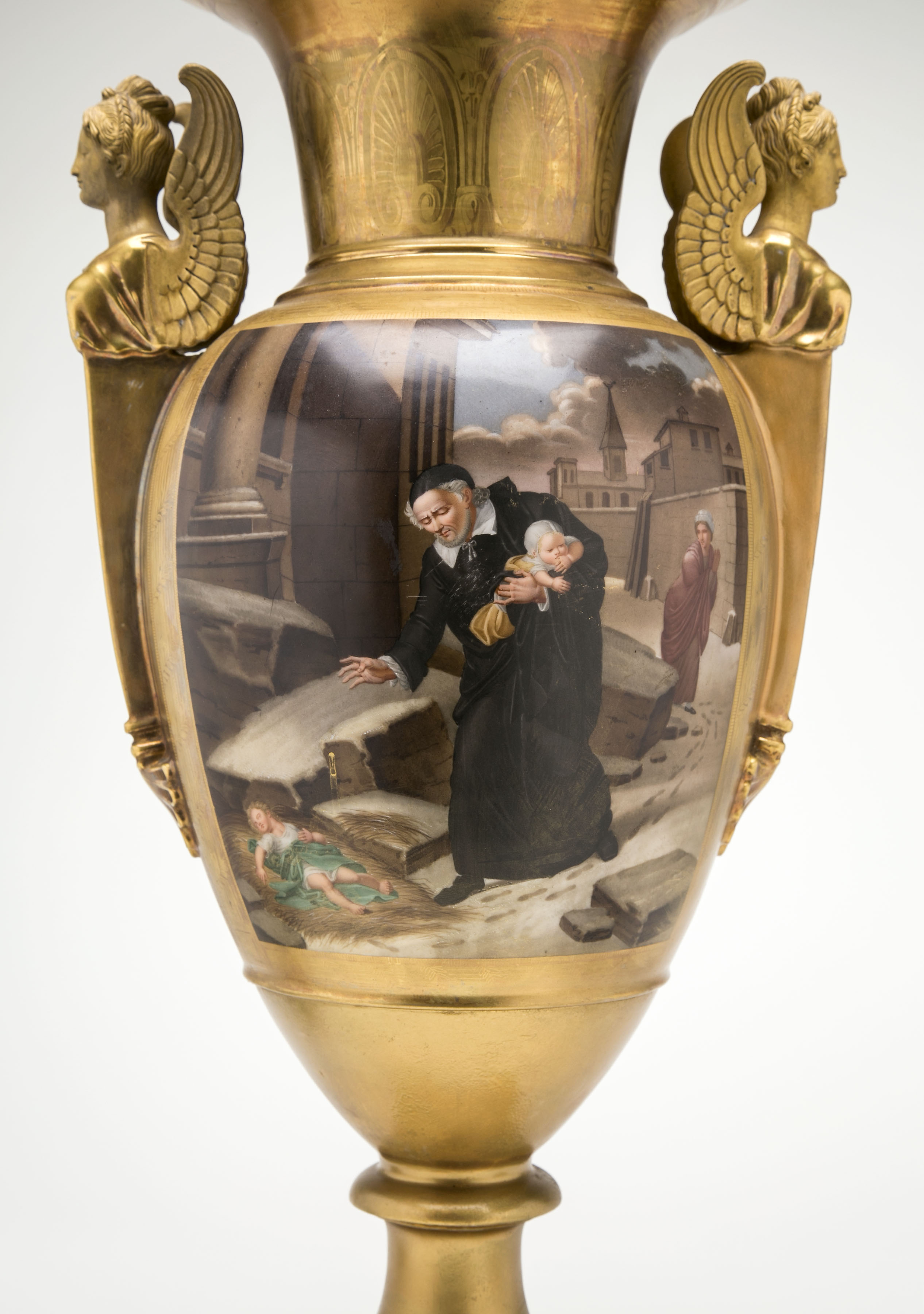
A gilded urn from the mid-19th century
pictures St. Vincent de Paul rescuing abandoned children from snowy streets. The
item is from DePaul University’s collection and is part of a special
exhibition, “The Many Faces of St. Vincent de Paul: Nineteenth-Century French
Romanticism and the Sacred,” at the DePaul Art Museum. (DePaul University/Jamie
Moncrief)
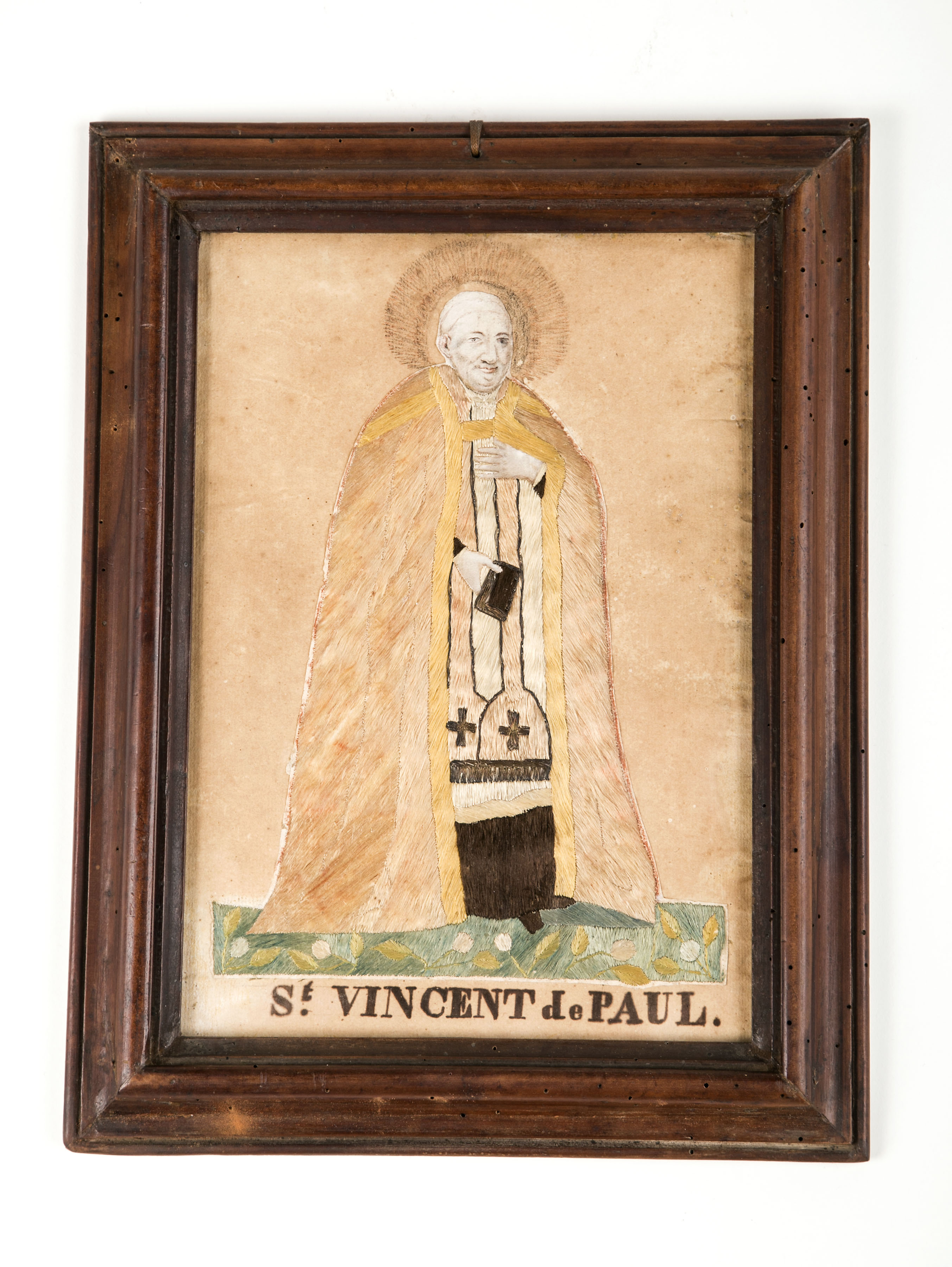
A rustic, hand-embroidered portrait of
St. Vincent de Paul is an example of the 19th-century craft, often practiced by
young girls to improve their sewing skills. The item is from DePaul
University’s collection and is part of a special exhibition, “The Many Faces of
St. Vincent de Paul: Nineteenth-Century French Romanticism and the Sacred,” at
the DePaul Art Museum. (DePaul University/Jamie Moncrief)
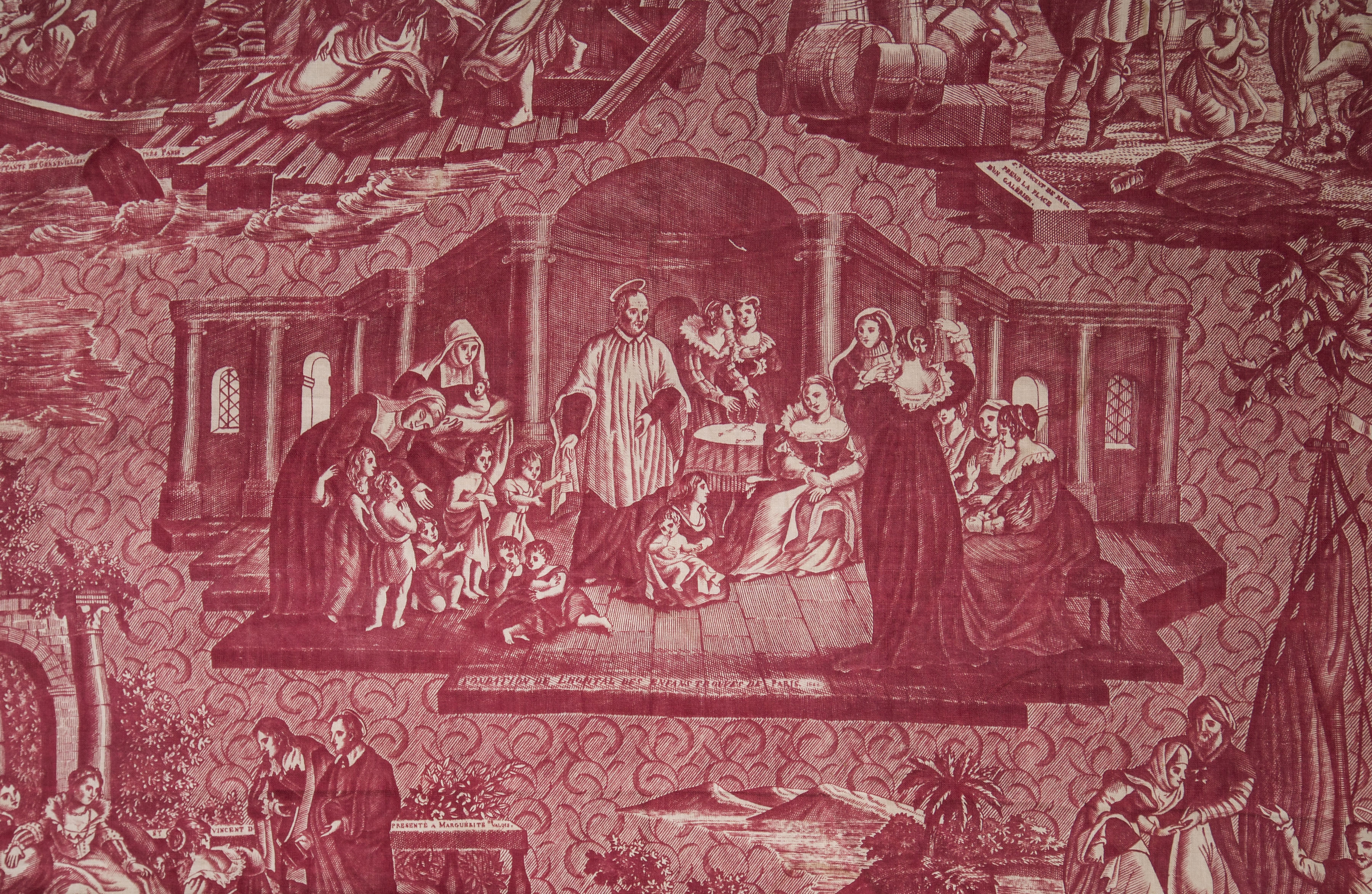
This panel of fabric from the beginning
of the 19th century depicts scenes from St. Vincent DePaul’s life in five
vignettes. Here, St. Vincent speaks to the Ladies of Charity about the plight
of the children before him. The item is from DePaul University’s collection and
is part of a special exhibition, “The Many Faces of St. Vincent de Paul: Nineteenth-Century
French Romanticism and the Sacred,” at the DePaul Art Museum. (DePaul
University/Jamie Moncrief)
CHICAGO — Art and the representation of saints have been
intertwined for centuries. An upcoming winter exhibition at the DePaul Art
Museum, “Four Saints in Three Acts,” will feature works by contemporary artists
who use religious imagery to consider their own relationship to religion,
belief and faith.
A complementary show, “The Many Faces of Vincent de Paul:
Nineteenth-Century French Romanticism and the Sacred,” will examine how artists
depicted DePaul University’s patron saint in material culture and decorative
arts. Both exhibitions open Jan. 26 and run through April 2.
“St. Vincent de Paul’s life and work drive the mission of
the university and museum. These exhibitions will help us explore his legacy as
an advocate for the poor and for what we know today as social justice,” said
Julie Rodrigues Widholm, the museum’s director and chief curator.
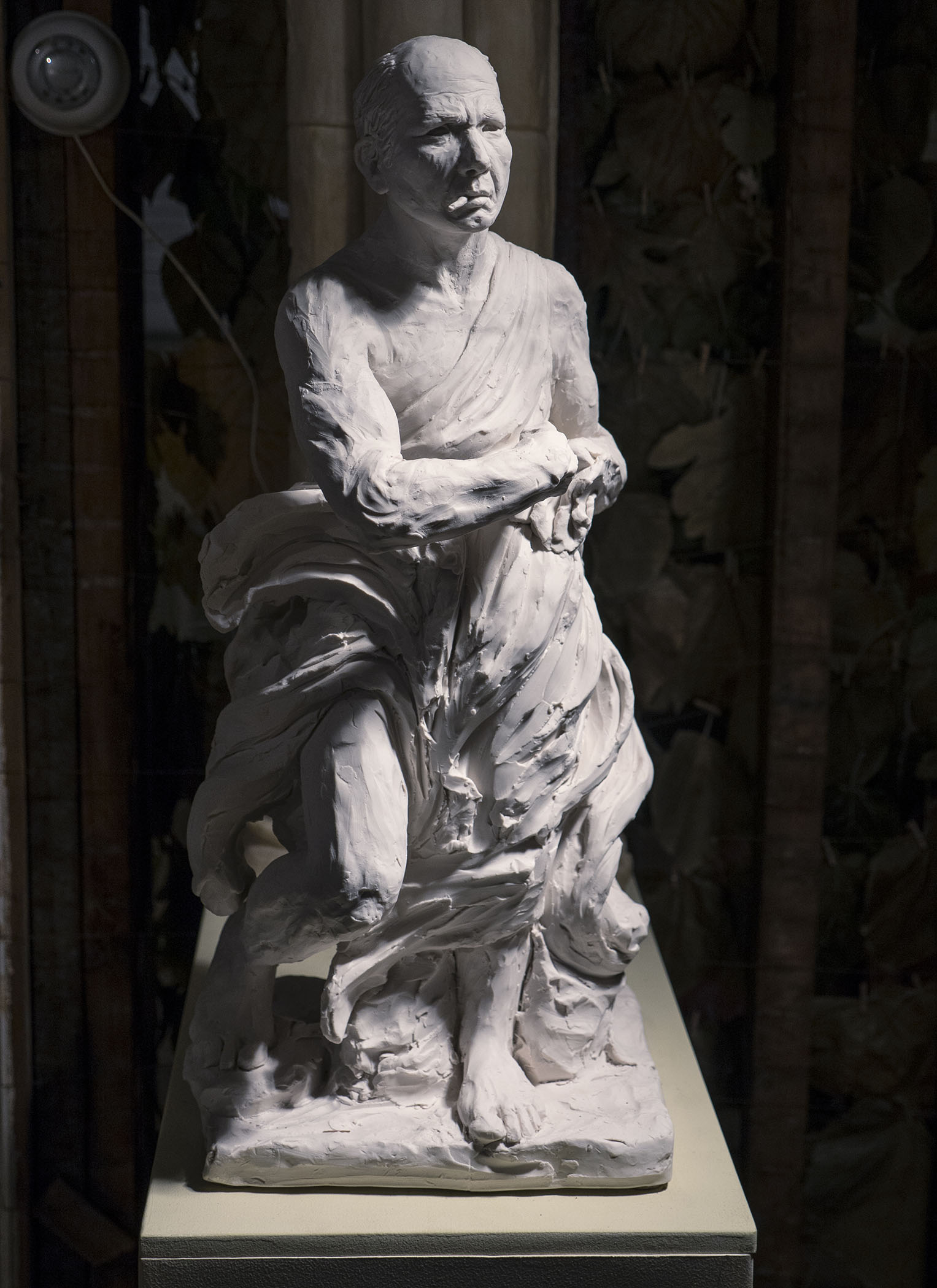 A ceramic and mixed media installation from Rodrigo Lara Zendejas, “Chapel” includes saint-like sculptures of iconic artists. This work will be on display at the DePaul Art Museum in “Four Saints in Three Acts,” an exhibition that examines religious imagery in contemporary art. (Photo by Ji Yang, courtesy of 6018North)Four Saints in Three
Acts
A ceramic and mixed media installation from Rodrigo Lara Zendejas, “Chapel” includes saint-like sculptures of iconic artists. This work will be on display at the DePaul Art Museum in “Four Saints in Three Acts,” an exhibition that examines religious imagery in contemporary art. (Photo by Ji Yang, courtesy of 6018North)Four Saints in Three
Acts
“Four Saints in Three Acts” takes its title from an
unconventional 1920s opera. Written by Virgil Thomson, with a libretto by
Gertrude Stein and stage design by artist Florine Stettheimer, the play “marked
a modernist, avant-garde take on the depiction of saints,” said Widholm. “In
that same spirit, I wanted to consider how contemporary art intersects with
notions of belief and faith, while expanding who is represented in these
venerated aesthetic traditions,” she said. For the group exhibition, Widholm will
bring together work from contemporary artists including Devin Mays, Dan
Ramirez, Rodrigo Lara Zendejas, Jeni Spota C., Kehinde Wiley, Nate Young and
Andrea Büttner.
“Though the art world today tends to be very secular, the
influence of religious iconography endures,” said Widholm. “Many of these
artists are using iconography to critically explore their relationships to
religion. It’s very personal.”
Lara Zendejas’s “Chapel” is a room-sized, cathedral-shaped
installation that houses saintly sculptures of iconic 20th century artists such
as Andy Warhol and Jean-Michel Basquiat. A Mexican-born artist who now hails
from Chicago, Zendejas was raised Catholic, and this work is a reflection of
his personal history and decision to devote his life to art.
“Faith and belief are vital to the life of an artist,” said
Widholm. “These works ask whom we venerate, revere and why. We also want to
contemplate how saints and artists both create a legacy that outlives their
life.”
The Many Faces of
Vincent de Paul: Nineteenth-Century
French Romanticism and the Sacred
Long before pop stars inspired T-shirts and trinkets, St.
Vincent de Paul’s devoted followers were clamoring for items in his image. In “The
Many Faces of Vincent de Paul: Nineteenth-Century French Romanticism and the
Sacred,” guest curator the Rev. Edward R. Udovic, C.M., gathers items from
DePaul University’s collection that reflect the rise of Vincent’s popularity.
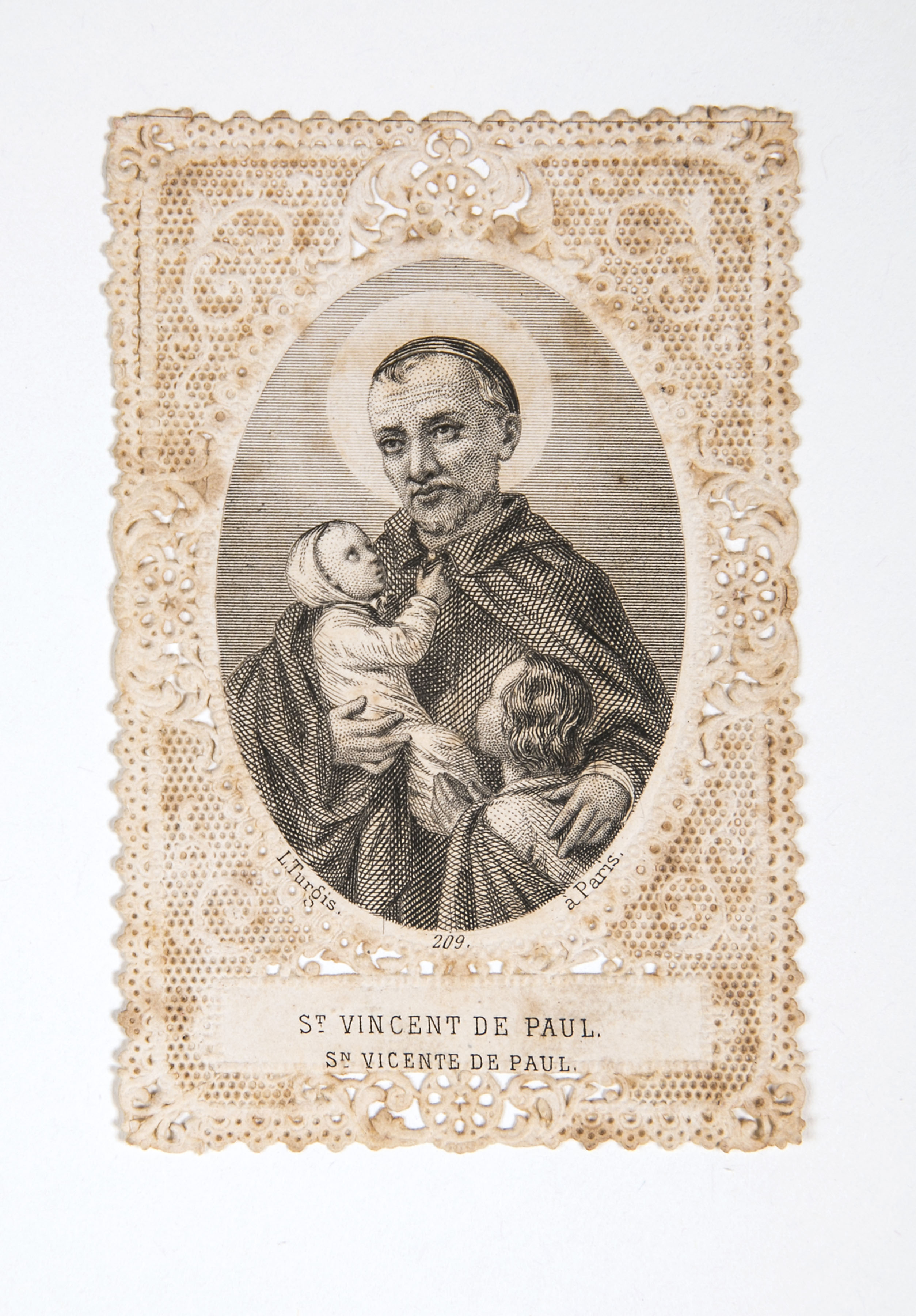 A holy card shows St. Vincent de Paul with a halo, holding an infant. These small, inexpensive images made devotional art accessible to the masses during the 19th century. The item is from DePaul University’s collection and is part of a special exhibition, “The Many Faces of St. Vincent de Paul: Nineteenth-Century French Romanticism and the Sacred,” at the DePaul Art Museum. (DePaul University/Jamie Moncrief)
A holy card shows St. Vincent de Paul with a halo, holding an infant. These small, inexpensive images made devotional art accessible to the masses during the 19th century. The item is from DePaul University’s collection and is part of a special exhibition, “The Many Faces of St. Vincent de Paul: Nineteenth-Century French Romanticism and the Sacred,” at the DePaul Art Museum. (DePaul University/Jamie Moncrief)“During his lifetime, Vincent was a controversial figure and
a classic church reformer. After the French Revolution, that was all history,”
said Udovic, a professor of history and senior executive for university mission.
In the 19th century there was a refounding of the Vincentian
order, and the French “reinterpreted Vincent in a very romantic, heroic way,”
said Udovic. Instead of being pictured as an evangelizer, artists began depicting
St. Vincent holding and rescuing children. “One baby was good, two babies were
better and three babies were great,” said Udovic. He explained that this shift
mirrors France’s movement toward a more secular society, and St. Vincent was
venerated as the “apostle of charity.”
This makeover of St. Vincent’s image coincided with
industrialization and the emergence of the middle class, so devotional items
made in his image became more accessible, explained Udovic. “There were all kinds
of holy cards and statues. In just the sheer scale and scope, it was an
explosion,” said Udovic.
He added that “Vincent is by far the most popular 19th century
French saint. Figures of him outnumber everyone else’s by a wide margin. He was
marketable because what he represented was marketable.”
DePaul University holds the world’s largest collection of
material culture related to St. Vincent de Paul. Artifacts on display from the
university’s collection reflect the varying quality and artistry of devotional
items from the period, said Udovic.
Today, Udovic and other Vincentian historians are interested
in examining what is fact and what is fiction in artistic depictions of St.
Vincent. “You can look at the thousands of images of St. Vincent de Paul and
see the themes — artists who are trying to uncover a universal truth,” he said.
Admission is free at DePaul Art Museum, located at 935 W.
Fullerton, just east of the CTA’s Fullerton ‘L’ stop. Museum hours are
Wednesdays and Thursdays from 11 a.m. to 7 p.m., Fridays from 11 a.m. to 5
p.m., and Saturdays and Sundays from noon to 5 p.m. The museum is closed
Mondays and Tuesdays. For more on DePaul Art Museum’s upcoming exhibitions and
events, call 773-325-7506 or visit http://museums.depaul.edu/.
###
Sources:
Julie Rodrigues Widholm
julie.widholm@depaul.edu
312-325-7229
Edward R. Udovic
eudovic@depaul.edu
312-362-8042
Media Contact:
Kristin Claes Mathews
kristin.mathews@depaul.edu
312-362-7735